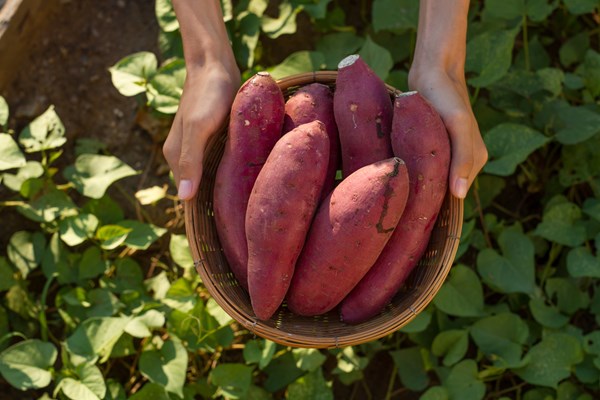‘Farm to School’ program aims to nurture student health and local ag … but how is it going?
Nov 28, 2023

October was Farm to School Month, which saw nearly 60 Hawaii public schools lead the way by taking the flavorful leap, incorporating ‘uala (sweet potato) into their lunch menus. The result enriched students’ diets with a taste of local staples while championing the Hawaii Department of Education’s (HDOE) objective of expanding menu offerings.
Rooted in Act 175 of 2021, the HDOE’s Farm to School program is more than just a seasonal initiative. It’s a legislative mandate aimed at amplifying student health, reinforcing food sustainability, and supporting local agricultural producers. Act 175 set a bold target for HDOE: a 30% quota of local food purchases by 2030. With that comes an obligation to submit an annual progress report to the Hawaii Legislature each December.
As Farm to School proponents await the HDOE’s next report, many observe that the journey so far has been a story of both progress and obstacles. The department’s December 2022 Annual Report on Farm to School Meals revealed that the purchase percentage of local agricultural products stood at just 6.2%, a considerable gap from the target with only six years to go.
“As the largest institutional consumer of food products in the state, serving more than 100,000 students daily, the program aligns with Hawaii’s Act 175,” said Lindsay Rodrigues, HDOE school food program administrator. “This act concentrates on improving student health while bolstering local farmers. The introduction of local products into school menus allows students to experience diverse foods and ingredients, contributing to a richer, more varied diet.”
In a more recent and welcome move, the HDOE posted a Request for Information (RFI) aimed at amplifying the department’s network of local suppliers. Responses gathered through the RFI are intended to lay the groundwork for a future Request for Proposals to diversify the range of local produce, proteins, and packaged foods served in school cafeterias.
However, it also brought to light certain barriers within the state’s procurement process. While the RFI was posted Oct. 19 on the Hawaii Awards and Notices Data System (HANDS), a news release wasn’t distributed until nearly a month later on Nov. 13. The delayed announcement and a condensed response period may pose hindrances to robust participation from farmers.
The RFI deadline of Nov. 27 was eventually extended a week to Dec. 4. But, many Farm to School advocates note the limited window left for comprehensive submissions from local farmers points out a stark contrast to HDOE’s pre-pandemic efforts. Before COVID, the Farm to School initiative included press conferences, public presentations, and commissioned reports to better engage and contract with farmers. Moreover, the Farm to School initiative faced setbacks during the pandemic, with many contracts canceled due to school closures. Rebuilding trust and strengthening ties with local agriculture has become an imperative.
Organizations like Ulupono Initiative have long championed Hawaii’s Farm to School program, recognizing its dual role in providing healthier choices for students while leveraging HDOE’s substantial purchasing power to bolster local farmers and ranchers.
The RFI represents a positive step, yet the sustained commitment of the HDOE to transparency, reporting, and enhanced engagement between local food producers remain essential for the program's long-term success.
The HDOE’s next Annual Report on Farm to School Meals is due Dec. 28.

